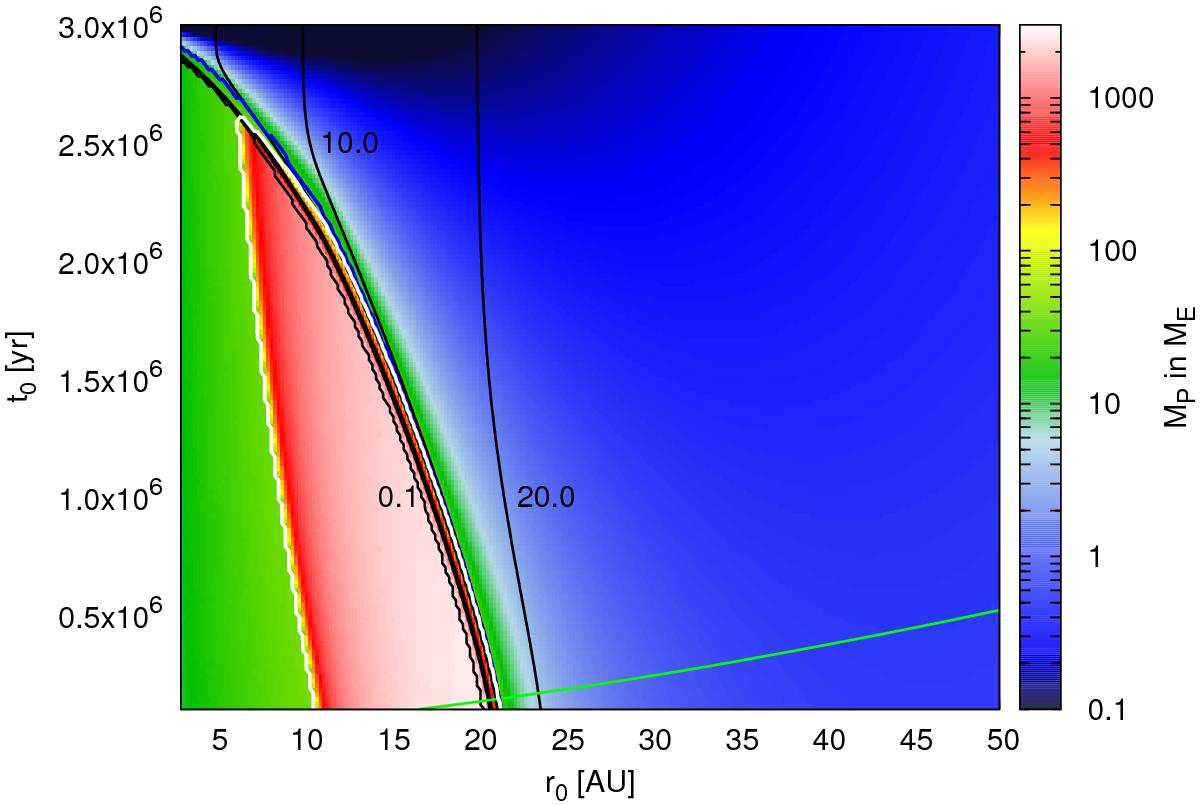Fig. C.1

Final masses of planets as a function of initial radius r0 and initial time t0 in the MMSN with a lifetime of 3 Myr. The lines inside the plots correspond to the same meaning as the lines in Fig. 4. We again use a metallicity of pebbles of Z = 1.0%. In contrast to the disc model of Bitsch et al. (2015), the MMSN disc allows 0.1 AU <rf< 5.0 AU only for a very small amount of parameter space. Either the planets fall close to the central star (rf< 0.1 AU) or they stay outside of 5 AU. On the other hand, the parameter region that allows for the formation of ice giants is greatly increased compared to Fig. 4.
Current usage metrics show cumulative count of Article Views (full-text article views including HTML views, PDF and ePub downloads, according to the available data) and Abstracts Views on Vision4Press platform.
Data correspond to usage on the plateform after 2015. The current usage metrics is available 48-96 hours after online publication and is updated daily on week days.
Initial download of the metrics may take a while.


